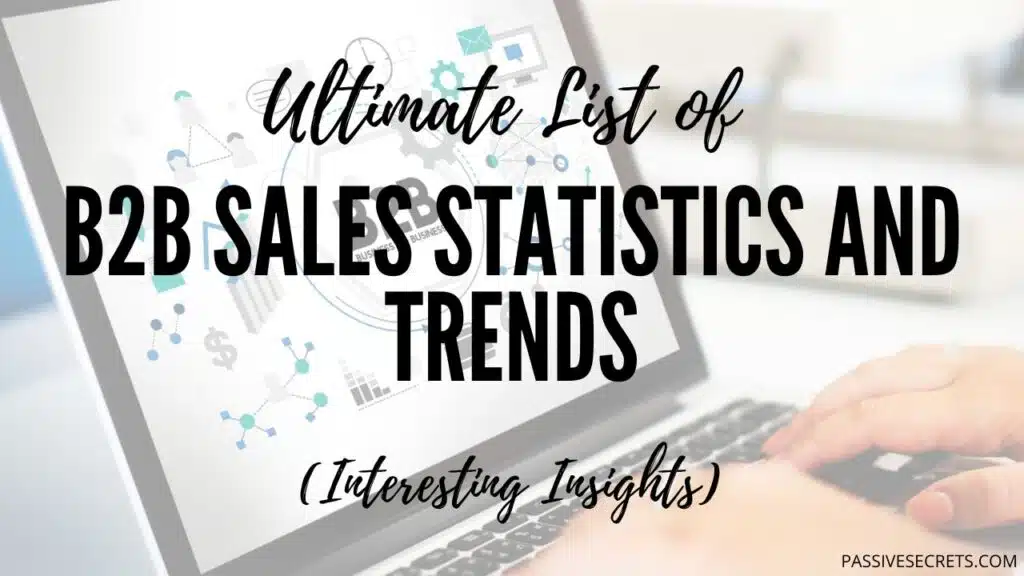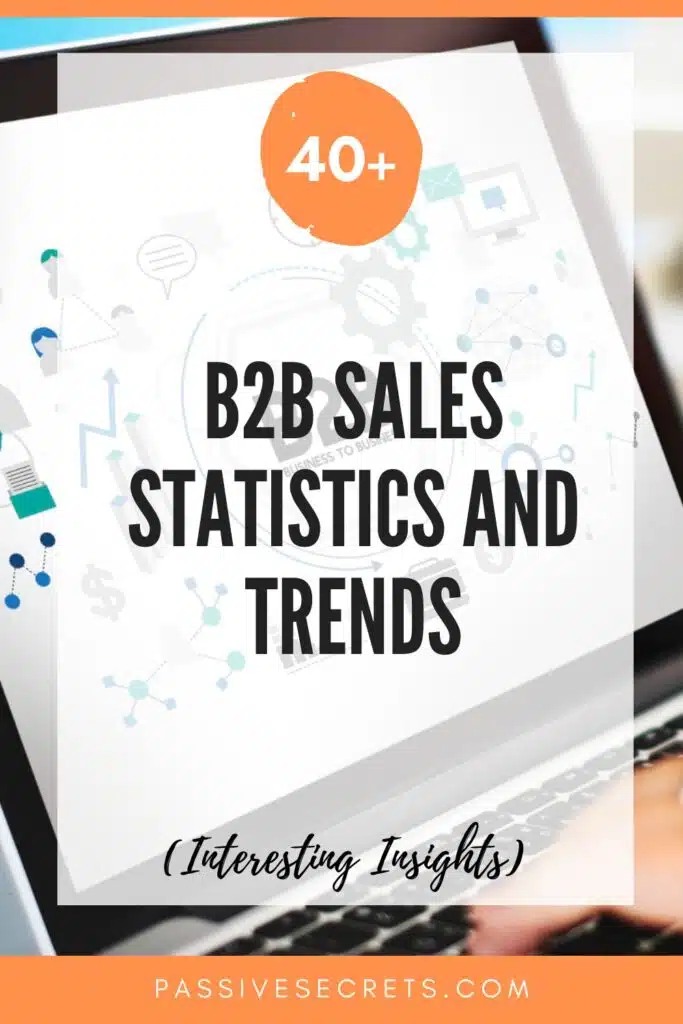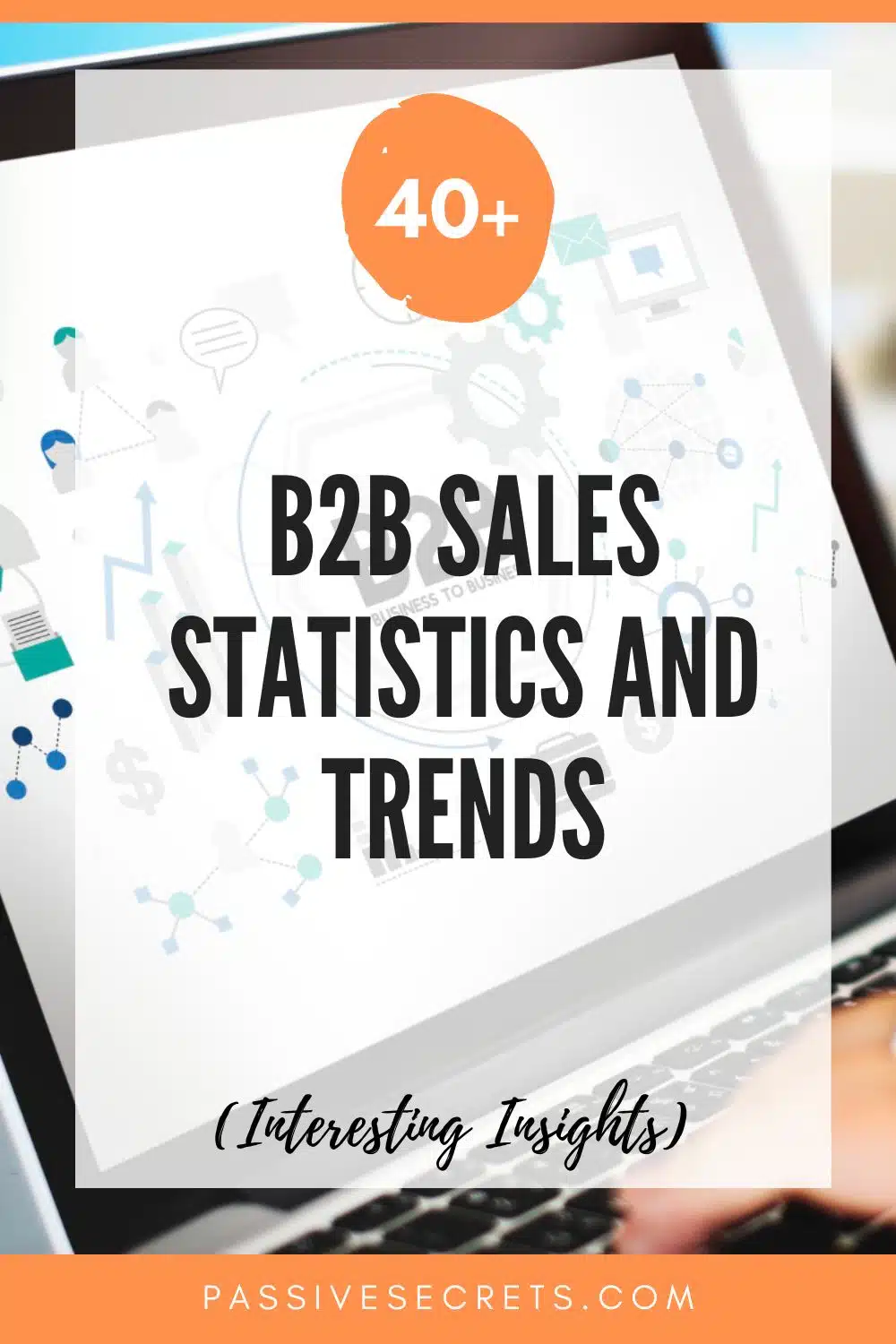
The B2B sales market is constantly evolving. Hence, understanding the latest trends and patterns in B2B sales is crucial if you want to stay ahead of your competitors and drive revenue growth.
Through this evolution, B2B sales professionals must adapt to changing customer behaviours, emerging technologies, and shifting market dynamics. With insights from the latest B2B sales statistics, businesses can refine their sales strategies, optimize their processes, and improve customer engagement.
In this article, we’ll explore the most recent and relevant B2B sales statistics, covering topics such as sales performance, customer behaviour, market trends, and more.
Key B2B Sales Statistics (Editor’s Pick)
General B2B Statistics
1. There is an estimate of 700,000 open B2B sales positions in 2024. (source)
2. Only 8% of B2B businesses have a partnership channel. Top-performing B2B businesses excel by focusing on accounts and personas they have a proven track record of successfully closing, giving them a competitive edge. (source)
3. 26% of B2B organizations cited supply chain challenges as the biggest obstacle to achieving their sales and marketing goals. However, 29% of B2B organizations expected inflation to be their biggest challenge. (source)
4. The average customer churn rate for a SaaS company is 5-7%. (source)
Market Trends for B2B Sales
5. In 2023, 14% of B2B sales were expected to be digital, up from 12.2% in 2020. Online channels now play a significant role in the B2B customer journey. (source)
6. US B2B companies will increasingly rely on digital channels for revenue. By 2025, 56% of revenue is expected to come from online sources, up from 34% in 2021. Despite this, third-party platforms are still underutilized in B2B sales. In 2022, 81% of B2B companies prioritized their own websites for selling products and services. (source)
7. UK B2B organizations’ digital revenue share rose from 33% in 2021 to 46% in 2023 and is predicted to reach 56% by 2025. (source)
8. US B2B organizations’ digital revenue share grew from 34% in 2021 to 45% in 2023 and is forecasted to reach 56% by 2025. (source)
9. Norway’s B2B e-commerce sales of physical goods reached $9 billion in 2022, up from previous years, and are predicted to rise to $10.7 billion by 2025. (source)
10. Germany’s B2B e-commerce sales of physical goods totalled $104.66 billion in 2023, a decrease from the previous year, but are predicted to rise to $119 billion by 2026. (source)
11. Over 65% of companies now favour remote and digital interactions over in-person interactions. (source)
12. The B2B Sales Outsourcing Services Market will grow from $2.734 billion in 2023 to $3.96 billion by 2031, at a 4.2% annual growth rate. (source)
13. The global B2B e-commerce market was $18.67 trillion in 2023 and is expected to grow at an 18.2% CAGR from 2024 to 2030. (source)
The home & kitchen segment accounted for the largest market share around 22% in 2023, under the ‘Product’ category.
14. 40% of B2B companies plan to prioritize collecting more first-party data in their go-to-market strategy over the next 12 months. (source)
15. 79% of B2B organizations expect their investment in sales and marketing data quality to increase, and nearly 80% say it has already increased in the last 12 months. This indicates a significant focus on data quality. (source)
16. B2B e-commerce sales across manufacturers, distributors, wholesalers, and retailers grew by 17% in 2023. (source)
B2B Sales Performance Statistics
17. In 2022, e-commerce led B2B sales in Scandinavia. 24% of B2B companies used secure e-commerce platforms, while 22% of wholesalers and manufacturers sold on public sites. (source)
18. Italy’s B2B sales saw e-commerce’s share rise from 13% in 2018 to 21% in 2022. (source)
19. E-procurement’s share of B2B sales grew to over 7% in 2022, despite companies’ preference for other e-commerce platforms, marking an increase from previous years. (source)
20. Just 8% of B2B organizations are currently capable of delivering highly personalized marketing, but a striking 75% of those that do report gaining market share. (source)
21. B2B sales teams faced a challenging 2023, with a bear market prevailing. Despite some improvements in the first half, win rates ultimately declined by 18% compared to 2022 and 27% compared to 2021, as budgets tightened. (source)
22. In 2023, 73% of B2B sales reps missed their quota, despite a strong start. In 2024, 69% are falling short, which seems like an improvement. However, quotas were reduced by 19%, and if they remained the same, 79% would have missed their quota. Additionally, only 15% of B2B sales teams have more than half of their reps achieving 80% or more of their quota. (source)
23. B2B reps attribute 61% of lost deals to “indecision”. For average B2B sales performers, the top reasons for lost deals are lack of budget (22%), not a priority (20%), and competition (14%). (source)
24. However, top B2B performers are 364% less likely to lose deals due to indecision. Instead, they cite a lack of features (25%) and ROI concerns (10%) as primary reasons for lost deals, indicating a more strategic approach to sales. (source)
25. 40% of B2B organizations said less than half of their sales team met their 2023 quotas. (source)
26. The average sales close rate is 29%. (source)
27. 2023 saw a 100% increase in B2B marketplace sales from the previous year. (source)
28. B2B companies with strong customer analytics are 1.5 times more likely to experience rapid growth and can boost earnings by 15-25%. (source)
B2B Sales Process Statistics
29. 35% of North American B2B tech marketers and decision-makers see steady communication and lead generation as key to building strong sales relationships. (source)
30. 57% of B2B sellers ignore marketing team content, finding it too generic and unengaging. (source)
31. 90% of B2B decision-makers believe marketing and sales teams should collaborate more closely to eliminate redundancy and improve efficiency. (source)
32. Hybrid and digital B2B sales roles are growing the fastest, with sales leaders increasing hybrid sales professionals, who combine field and inside sales skills, by 50%. (source)
33. 64% of B2B sales professionals offer self-service tools to aid buyer decisions, and 85% find it effective. (source)
34. 28% of sales professionals say the top reason prospects cancel deals is a lengthy sales process. (source)
B2B Customer Behavior Statistics
35. In the US, 67% of buyers use search engines to discover products, and 50% browse online marketplaces. (source)
36. 70% of businesses are open to switching vendors if their essential needs aren’t met or if they have a subpar buying experience. (source)
37. The number of marketing and sales touchpoints in the B2B buying experience has doubled from 5 to 10 in just 5 years. (source)
38. B2B buyers now spend approximately 33% of their time engaging with self-serve content throughout the entire buying process. (source)
39. 52% of B2B sales professionals say customers used self-serve tools more than in 2023. (source)
40. 70% of B2B buyers find online purchasing more convenient and prefer it when making a purchase. (source)
41. Only 36% of B2B buyers rated their B2B e-commerce site experience as excellent, just over a third. (source)
42. 70% of B2B executives are willing to spend up to $500,000 or more in a single online transaction. (source)
43. Price increases were the leading cause of customer loss, cited by 71% of companies. (source)
B2B Sales Trends 2025
1. Data-Driven Decision Making
Data-driven decision-making is a key B2B sales trend for 2025. It involves using data and analytics to inform sales strategies and interactions, helping sales teams understand customer behaviour, preferences, and needs, and make informed decisions.
Statistics show that over 40% of companies globally use big data analytics, and many are now reaping various benefits from big data.
To implement this approach, businesses capture and integrate data from various sources, analyze and interpret it using analytics tools, train sales teams on data analysis and interpretation, and continuously refine sales approaches based on data insights.
This leads to improved sales conversions, enhanced customer satisfaction, increased efficiency and productivity, and better ROI measurement and optimization.
2. Artificial Intelligence in Sales Operations
This trend involves using AI technologies to streamline and optimize sales processes, enhancing efficiency, productivity, and customer engagement. AI automates repetitive tasks, such as data entry and lead qualification, and analyzes vast amounts of customer data to gain insights into behaviour and preferences.
By adopting AI in sales operations, businesses can boost sales performance and revenue growth, improve sales forecasting accuracy, enhance customer satisfaction and loyalty, reduce sales cycle times and costs, and gain a competitive edge in the market.
In 2025, AI will continue to transform B2B sales, enabling sales teams to focus on high-value activities like building relationships and closing deals, while AI handles the rest.
3. Remote Selling
Remote selling is another key B2B sales trend for 2025. This trend involves using digital tools and technologies to engage with customers and close deals remotely, without the need for in-person interactions. Remote selling enables sales teams to connect with customers from anywhere, at any time and provides a more flexible and convenient buying experience.
With remote selling, businesses can expand their reach and connect with customers across different geographies, time zones, and languages. This trend also enables sales teams to focus on high-value activities like building relationships, understanding customer needs, and providing personalized solutions.
Remote selling will continue to shape the B2B sales market, driven by advances in digital communication tools, virtual and augmented reality, and artificial intelligence. As a result, sales teams will need to develop new skills and strategies to effectively engage with customers remotely and build trust in a virtual environment.
4. Increased Account-Based Selling
This approach involves targeting specific accounts and decision-makers with personalized marketing and sales efforts, rather than casting a wide net. Account-based selling allows B2B sales teams to focus on high-value accounts, build strong relationships, and deliver tailored solutions that meet the unique needs of each account.
As businesses continue to face increased competition and complex buying processes, account-based selling enables sales teams to stand out and drive growth. By prioritizing accounts with the highest potential, sales teams can:
In 2025, account-based selling will become even more crucial, as businesses seek to maximize revenue from existing customers and attract new high-value accounts. Sales teams will need to leverage data, analytics, and digital tools to identify and target the right accounts and deliver personalized experiences that drive long-term growth.
FAQs

Other Related Statistics You Should Know:
- 50+ Essential Traditional Marketing Statistics & Trends
- Pay-Per-Click Statistics 2025: Key Insights
- 60+ QR Code Statistics, Usage, Forecasts & Trends
- 90+ Useful Marketing Jobs Statistics & Facts (Latest Report)
- Sales Enablement Statistics: Data You Need to Drive Sales Growth
- In-store vs Online Shopping Statistics And Analysis
- Social Media Addiction Statistics
- Latest In-Game Advertising Statistics
- From Passion to Profit: 120+ Creator Economy Statistics
- 80+ Big Marketing Software Statistics
- 45 Interesting Healthcare Marketing Statistics & Trends
- Print Marketing Statistics: Ad Spending, Market Size, & More
- Key Short-Form Video Statistics and Trends You Should Know
- 49 Interesting Emotional Marketing Statistics
- 90 Amazing Millionaire Statistics
- 70+ Top Law Firm Marketing Statistics & NEW Trends
- Millennials on Social Media Statistics
- 23 Most Interesting First Impression Statistics To Know
- 60+ Interesting Storytelling Statistics, Facts & Huge Trends
- Amazon Book Sales Statistics: Intriguing Numbers and Facts
- 61+ Useful Podcast Advertising Statistics And Trends
- 50+ Useful Call Center Statistics And Trends
- 50 Crucial Amazon Advertising Statistics & Trends
- 40+ Interesting Omnichannel Marketing Statistics & Trends
- Multi-Level And Network Marketing Statistics, Facts & Trends
- Virtual Event Statistics & Benchmarks For Marketers & Organizers
- 55 Interesting Direct Mail Marketing Statistics and Trends
- B2B Lead Generation Statistics, Facts, Trends, Benchmarks, & Market Size
- 52 Valuable Trade Show Statistics and Trends
- 100+ Top Digital Marketing Vs. Traditional Marketing Stats
- 110+ Important Social Media Advertising Statistics & Trends
- 50 Interesting Organic Vs Paid Search Statistics To Know
- 41+ MOST Important Copywriting Statistics To Know
- 80+ Useful Sales Funnel Statistics & Conversion Rates
- 40+ Latest Multi-Channel Marketing Statistics & Huge Trends

